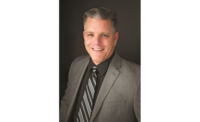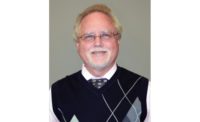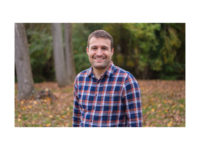Every successful project starts with a framework. A vision statement. A blueprint.
The editors of Engineered Systems are proud to present The Blueprint — a monthly Q&A interview with HVACR engineering’s leading voices. These one-on-one discussions will examine the trade’s history, current industry trends, the factors shaping the sector’s future, and more.
With $21.4 billion in sales in 2019 and more than 100,000 employees, Eaton is one of the largest power management companies in the world. Its energy-efficient products and services help its customers effectively manage electrical, hydraulic, and mechanical power more reliably, efficiently, safely, and sustainably.
The manufacturer’s electrical products help utilities generate, transmit, and distribute power. And once that power is distributed, the company helps people use it efficiently and safely, whether in a building, industrial facility, data center, or home. Our solutions range from circuit breakers to switchgear to machine controls to LED lighting.
Recently, Dan Carnovale, manager of the Eaton Experience Center in Pittsburgh, sat down with Engineered Systems editor-in-chief, Herb Woerpel, to discuss the industrial skills gap, industry training, new technologies, and more.
Engineered Systems: How exactly does Eaton define the industrial skills gap, and how is it impacting commercial and industrial applications?
Carnovale: I’ve seen a real need for more training for both new hires and experienced professionals. New professionals may have hundreds of classroom hours behind them but little training on the actual equipment they’re going to use or design in the field, while seasoned professionals can often benefit from training and hands-on experience on the latest technologies and codes and standard changes. This issue is made more complex due to the skills gap. Analysts report the steadily retiring workforce may leave an estimated 2.4 million industrial positions unfilled through 2028 (source: Deloitte). Filling this skills gap is a significant challenge for both commercial and industrial customers, because there is not enough new talent to fill the shortfall caused by retiring workers.
Further, electrical systems powering HVACR equipment are rapidly changing with IIoT and increasing digitization. Engineers and electrical contractors must be able to leverage IIoT technologies to deliver new data-driven insights and analytics tools. We’re helping designers, electricians, and facility managers integrate intelligent technologies and energy dashboards through our hands-on training programs. Education is pivotal for addressing the current skills gap, and Eaton has a long-term commitment to industry education programs.
Engineered Systems: What steps is Eaton taking to address the skills gap?
Carnovale: To help our customers, Eaton is targeting the power industry skills gap with long-term investments in hands-on education, training, and industry programs for both the current and next-generation workforce.
To support engineers, consultants, and electricians throughout their careers, we’ve developed our own training programs and partnered with industry organizations. For example, we’re fostering hands-on training for power industry professionals and yielding powerful advantages through our long-term collaborations with industry organizations like San Jacinto College. Eaton recently helped San Jacinto College establish its new Center for Petrochemical, Energy, and Technology (CPET), which is helping add more qualified, certified professionals to industrial talent pipelines in the Gulf Coast.
For students and young professionals, we’re also joining forces with colleges and universities to facilitate learning through real-world training programs. Our work with the University of Pittsburgh is a powerful example of how we’re working with universities to provide hands-on training. We’ve worked with the University of Pittsburgh for over a decade to develop new courses, certificate programs, and research projects to help students speak the language of electrical power.
Engineered Systems: What programs are you supporting for rising and/or established engineers?
Carnovale: We’re taking the mystery out of electrical power systems. For electrical engineers, consultants, and electricians, our long-term investments in education start at our own Eaton Experience Centers. We provide training and certification programs to support continuing education for experienced professionals and those new to the industry.
Eaton’s programs include:
- Hands-on training and information sessions at our Eaton Experience Centers and regional manufacturing facilities in the U.S. and around the world;
- Regular industry tech days and training courses, where our experts provide critical training sessions on a range of technologies for CEUs and PDHs;
- Online training courses on arc flash safety, electrical maintenance programs, and more; and
- Customized training on a range of topics from safety to maintenance to new technologies that can help the workforce get up to speed on the latest codes and standards.
For example, with more HVAC systems standardizing on the use of variable frequency drives (VFDs), training programs at our Experience Centers help designers, installers, and facility managers identify issues like harmonics before they become a problem when installing drives. At our Power Systems Experience Center in Pittsburgh, our experts teach interactive classes with a power monitoring modeling program that simulates real-life situations for motor starting and harmonics, enabling attendees to see how to properly use the modeling program and set up what-if scenarios at their facilities.
Importantly, electrical consultants play a vital role across nearly all industries, and it’s essential for these electrical system designers to understand the product lines, tools, and services available. We offer a two-day Power Up Consultant Training seminar that guides early-career consulting engineers through electrical design characteristics, including power system design, system protection and coordination, and power quality.
Engineered Systems: What organizations are you working with to help provide education and training courses?
Carnovale: Eaton has partnered with industry organizations like the electrical training ALLIANCE to provide the next generation of electrical contractors with the education resources, innovative solutions, and expertise they need. Our focus is on enriching the electrical industry through assistance in curriculum development, hands-on training, and direct access to training program and facilities. We also provide many resources to the joint apprenticeship and training committees and contractors across the country. Over the years, we’ve helped develop technical curriculum materials and supplemented instruction with our own industry experts.
Next year, we’re also hosting the Independent Electrical Contractors (IEC) National Instructor Conference at our Eaton Experience Center in Pittsburgh. Attendees will see electrical power management technologies at work, take advantage of hands-on training, and explore the new functionality of digital solutions.
Engineered Systems: What suggestions do you have for the industry to optimize existing resources?
Carnovale: There is an opportunity to boost productivity through both:
• Investments in educational programs to increase the number of skilled, certified professionals available; and
• Digital innovations that can enable new data-driven insights and analytics tools that enable us to make smarter decisions faster.
Engineered Systems: If you could share one bit of advice for consulting/specifying engineers, what would it be?
Carnovale: I think it’s an exciting time to be an electrical professional, helping power the critical operations that our communities rely upon. With the current shortage of qualified professionals, you know there will be career opportunities for you.
For professionals new to the industry, hands-on training in real-world environments and equipment is essential. Eaton’s Power Up training course provides visual training, collaboration, and networking. We cover power quality, power system design, and system protection and coordination in the two-day seminars.
Engineered Systems: The onset of next-generation technology is disrupting the HVACR industry. What technologies has Eaton most recently embraced, and how are they impacting the company’s present/future?
Carnovale: Applying digital technologies yields powerful advantages, such as reducing time needed for install, commissioning, maintenance, and troubleshooting; putting equipment to work in new ways, which cuts the number of components needed; and creating dramatic improvements in equipment procurement and system design.
Our digital approach is enabling rapid innovation and making it easier for customers to integrate digital technologies. We’re putting connectivity in the hands of our customers and enabling them to achieve new levels of energy savings and uptime.
We’re seeing the benefits of embedded, transformative IoT technology directly into foundational electrical components. Molded case circuit breakers, like our new Power Defense Molded Case breakers, provide vital functionality in nearly every low-voltage application around the world, protecting connected devices from overloads and short circuits.
Now, in facilities that require hundreds of these devices, real-time data from the intelligent circuit breakers can be tracked and analyzed to prompt condition-based maintenance – an easier, faster and far more cost-effective way to maintain an electrical system than reacting in an emergency situation. With these intelligent breakers and other IoT devices, including human-machine interfaces (HMIs), we’re showing designers how to optimize the use of load-level monitoring and dashboards, which also help facility managers visualize the power system.
You don’t need to be a power system expert to deploy IoT-enabled equipment. We’re providing the hands-on training at Eaton Experience Centers to get important details about your power systems to create safer, more reliable and efficient systems.
Engineered Systems: What other innovations currently going through R&D are Eaton most excited about?
Carnovale: IIoT forces all of us to rethink what possibilities exist. Eaton sees powerful benefits from IIoT and cloud-based analytics. For example, we’re offering new platforms that enable remote device configuration and commissioning. What does this mean? Electricians no longer need to wait for a specialist to arrive on-site to configure electrical devices. And, with data and settings stored in the cloud, you don’t need to find “that guy” when you need to troubleshoot, adjust, etc.




